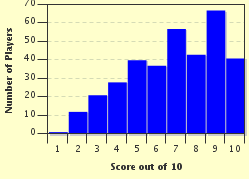Quiz Answer Key and Fun Facts
1. What boxer, convicted of a 1966 triple murder in New Jersey, was aided in his successful fight to win a new trial and eventual freedom by a 1975 Bob Dylan song?
2. One of the most infamous incidents of antisemitism in French history involved the false conviction on charges of treason against what French Army captain?
3. In 1996, security guard Richard Jewell first discovered and then was accused (wrongly) of causing a bomb explosion at a major international sporting event. What city and event was the target of the bombing?
4. In 1982, 49 gold ingots were stolen from the Perth Mint. Peter, Ray and Brian Mickelberg were tried and convicted of the crime, only to be exonerated in 2004 when it came to light that the police used falsified evidence. By what popular name is the robbery the Mickelberg's were wrongly convicted of known by?
5. Few criminals are revered as national heroes, later burned at the stake, pardoned, and finally made a Christian saint. What French heroine of the Hundred Years' War ran this gauntlet before being canonized in 1920?
6. What is the geographic name used to describe the Arkansas teenagers who were wrongly convicted of murder in 1994, and were the subject of the highly acclaimed "Paradise Lost" trilogy of documentaries?
7. In 1984 Daryl Hunt, an African-American, was convicted of the rape, kidnapping and murder of a young Caucasian woman in Greensboro, North Carolina. New evidence based on what advancement in forensic science proved Hunt's innocence and led to his conviction being overturned?
8. The wrongful conviction of Timothy Evans for the murder of his wife and infant daughter in 1950 was instrumental in the UK abolishing what practice?
9. Despite claiming her innocence, Lindy Chamberlain was convicted of the 1980 murder of her nine week old daughter while camping near Uluru (Ayer's Rock) in Australia. What animal was later found to have committed the crime, thus exonerating the grieving mother?
10. Popular belief is that the US television show and movie "The Fugitive" were inspired by the real life case of what American doctor, convicted of the murder of his wife in 1954 and then later acquitted in 1966?
Source: Author
adam36
This quiz was reviewed by FunTrivia editor
bloomsby before going online.
Any errors found in FunTrivia content are routinely corrected through our feedback system.

